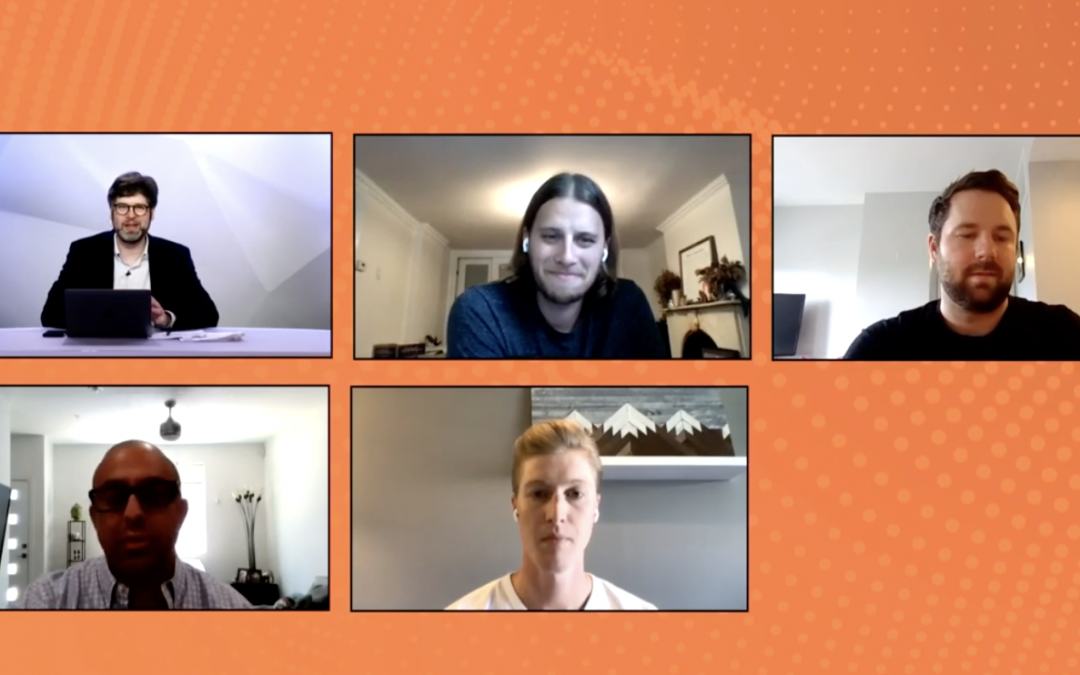Now that the dust has settled from this year’s Food On Demand Conference, we reached out to our moderators and panelists to answer any outstanding audience questions we weren’t able to cover during the live Q&A sessions.
If you have any additional questions for us or individual panels, please send them my way at [email protected].
 Tracking the Shift in Consumer Expectations
Tracking the Shift in Consumer Expectations
NA: I find that the older demographic thinks about food tampering more than other age groups.
| Sam Acuna, Gallup: With safety concerns today and other liability in general, restaurants should look to provide the highest level possible of safety protocols, regardless of demographic. |
Mike D: Do third-party delivery companies concern themselves with products using during transport to ensure quality of food is the same [as] when it leaves the restaurant to when it’s delivered to the end user?
Vishal Agarwal, ItsaCheckmate: In working closely with various 3rd party platforms and their larger national brand merchants, this is something that has definitely grown in importance over the last one year. The 3rd party platforms are providing their merchants / restaurants with best practices on how to package the food to make sure it stays tamper free and fresh. They are also working closely with the restaurants to curate the menu to ensure only food that travels well is included in the menu. The entire in-store menu does not have to be presented online.
| Joe G: Delivery is expensive for consumers and we are heading into an economic downturn and high unemployment. Will that have an impact on people continuing to use this service post-COVID? |
Vishal Agarwal, ItsaCheckmate: “Delivery is expensive” has always been the general conception with the consumers, which is why it’s adoption has not been as high as it can be. However, Covid has forced quite a few new demographics to try delivery and what it has presented to them is that delivery provides a value. It saves them time, it keeps them safe and enables them an option between home food and dining out. It is another option, and worth the value. This is also the reason delivery as a % of restaurant sales will not go down to the pre-COVID levels, once this pandemic is over.
Sam Acuna, Gallup: The longer the pandemic continues, the more likelihood that these new behaviors will be sustained over time. The value in the delivery fee is around minimizing the risk of catching COVID. Even with higher unemployment, consumers will still choose to have food delivered, however it may not be as frequent.
| NA: These are no longer incremental orders for restaurants but rather their only orders where they need to make money. |
Vishal Agarwal, ItsaCheckmate: Yes, but that is temporary. Once the restaurants start opening back up, delivery will return to be a % of the overall sales. On the point about incrementality, there is no doubt that some of the delivery orders cannibalize the in-store sales, but delivery also provides incremental sales, which results in overall increase in revenue for the restaurant. We know on a net effect basis, delivery is incremental so we cannot choose only the incremental piece of the business and discard the part that cannibalizes. It is part of the package but the most important thing to note is that overall, it is incremental, i.e., delivery provides sales that otherwise the restaurant would not have had.
George Katrantzo: What does integration look like for non-restaurant retail like delis and supermarkets?
Vishal Agarwal, ItsaCheckmate: ItsaCheckamate has started working with a few delis that use traditional restaurant POS systems such as Aloha or Micros, but the supermarkets and groceries have their own line of POS systems which is yet very new from an integration perspective.
Franchised Delivery Ops
Katie Hards: For the never adopters, what’s their reasoning for opting out of delivery? What would it take for Moe’s to move from optional to mandatory?
Tad Low, Moe’s Southwest Grill: Regarding the question about the “never adopters,” the biggest concern for the never adopters is still over profitability and operational complexities. I’m my experience, there is a level of unfamiliarity with technology for this group, combined with fear and uncertainty in the marketplace, many of the never adopters are skeptical of the data and case studies shown. This group is getting smaller over time, but some people will never adapt to technology.Every franchisor has their own perspective, so I wouldn’t be able to comment and what metrics they would use to make the decision on mandating. But as integration comes to the forefront, lower commission fees, owned delivery channels (ie. dispatch) and a consumer segment demanding this as tables stakes, the case for not opting into delivery is becoming harder to make.
Harnessing Customer Data and 1:1 Marketing
NA: Non-traditional data – is competitive analysis still non-traditional in the food and restaurant industry?
Darren Tristano, Foodservice Results: Competitive Analysis is still traditional (not non-traditional). Traditional data is harder to use because the comparability is more difficult because of the disruption/fluctuations in the industry data year-over-year. Also, there are several new sources for data including catering (ezCater), 3rd-party (Uber Eats, DoorDash, Grubhub) and credit card analysis that can be helpful in evaluating competitive analysis across. If the question relates to non-traditional foodservice, the same is true of this sector vs. commercial food services.
Lexi: We’ve been trying to make Facebook Message online ordering work for about one year and it’s just not picking up. I feel that maybe we are too early with this technology. Should we take a break? Wait it out? Give up on this?
Darren Tristano, Foodservice Results: Facebook and conversation ordering is at the inception of the trend and technology. This is the future of ordering so it’s best to continue to use it and expect the volume of orders to increase as the trend grows with GenZ and Millennials and eventually takes shape with older generations. Expect technology to improve and ordering processes to become more streamlined, accurate, simpler and most importantly, less costly to the operator.
Virtual Reality: Making Money With Delivery-Only Kitchens and Virtual Kitchens
Safi: How is Kitchen United managing sanitation for these shared kitchens? And, for what reasons would a ghost kitchen not be active right now? We are seeing some in NYC not active.
Jim Collins, Kitchen United: KU deep cleans the kitchen centers several times per week, including all restaurant kitchens. We also require stringent sanitization, etc including new steps to include precautions around COVID-19. Restaurants who violate KU cleanliness and sanitation policies can be terminated from the Kitchen Center if violations persist unaddressed. (Luckily we’ve never had to do this as restaurants tend to take all of this pretty seriously anyway). Some “ghost” concepts have actual shared kitchens where cooks share cooking Iines, etc. I don’t know which concepts you’re talking about specifically, but I know for concepts like this social distancing, etc., was prohibitively difficult. KU provides separate 4 wall kitchens for each restaurant, so this wasn’t an issue for us.
Andrew: Does KU work in a department store box? Seems like there will be a lot of real estate opportunities there.
Jim Collins, Kitchen United: Funny… Lots of people asking about this. The answer is a qualified yes. We don’t need anything like the whole box, most department stores are between 20K and 40K sq ft and that’s way too big for our use. We have also found that most department stores aren’t located in high density population areas and this is also a problem.
Jessica Kates: Hi! Do you think KU would take over defunct department stores like Amazon is doing in malls?
Jim Collins, Kitchen United: See above. Amazon is a grocery store and requires a lot of retail space. We don’t need anything like their footprint, so most of these locations are too big. (There is plenty of other real estate available, so this doesn’t present a growth challenge for us).
NA: When will KU actually become profitable?
Jim Collins, Kitchen United: The short answer is essentially when we choose to.The long answer is confidential.
Designing the Restaurants of the Future
Nancy Hampton: Are chefs obsolete in this “spin it up” and “just launch it” digital version of restaurants?
Sterling Douglass, Chowly: I think that’s the wrong way of looking at it. If you look at the virtual restaurants that Robert Earl is spinning up, he’s literally using Iron Chefs to build these brands. Sometimes on the technology side of things, we tend to skip past crucial foundational pieces to a restaurant (that don’t concern technology). Almost everything we say should be qualified with “assuming the food is great and the staff is happy” because without those 2 things, no restaurant will be successful, virtual or otherwise.


